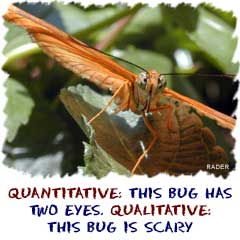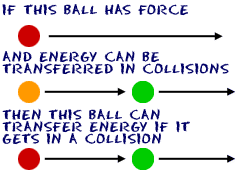 The scientific method is a rational, logical thought process that is used to figure out facts and truths. All of the answers must be able to be proved. When someone comes up and says, "Hey! I figured out the answer!" the other scientists can get together, see what the new person did, and then they repeat the procedures. If they come up with the same answer, everybody is happy. If the answer is different, someone did something wrong and everyone starts all over again.
The scientific method is a rational, logical thought process that is used to figure out facts and truths. All of the answers must be able to be proved. When someone comes up and says, "Hey! I figured out the answer!" the other scientists can get together, see what the new person did, and then they repeat the procedures. If they come up with the same answer, everybody is happy. If the answer is different, someone did something wrong and everyone starts all over again. There are no opinions that are considered scientific laws. To scientists, the truth is something that is quantitative. Quantitative statements are ones that can be proved through experiments. When someone has an opinion, or an idea that can't be proved directly, they call it a qualitative argument.
Deductive Reasoning
 Deductive reasoning has you starting with information or an idea that is called apremise. Eventually you come up withconclusions that are based on your original premise. Sherlock Holmes, that detective guy from the books, uses deductive reasoning to solve mysteries. Think of it this way:
Deductive reasoning has you starting with information or an idea that is called apremise. Eventually you come up withconclusions that are based on your original premise. Sherlock Holmes, that detective guy from the books, uses deductive reasoning to solve mysteries. Think of it this way:(1) If this happens...
(2) and this happens...
(3) then you can come to this conclusion. If the premises are true, then your conclusion should also be true.
Inductive Reasoning
Inductive reasoning works in the opposite direction. You start by having a number of observations. "I see that." "That happens here." "I believe that this will happen just like the others because the circumstance is similar."It is a process in two parts. First you start with specifics and come up with a theory. That's deductive. When you apply that theory to new areas, it is inductive reasoning. You organize data into categories and say, "What do these have in common?"
There is a problem with inductive reasoning: your conclusions have more information than the facts you use. You start with dozens of observed examples, take an inductive leap, and assume millions of possible examples. If the conclusion is true, then new premises and assumptions are true.








0 comments:
Post a Comment